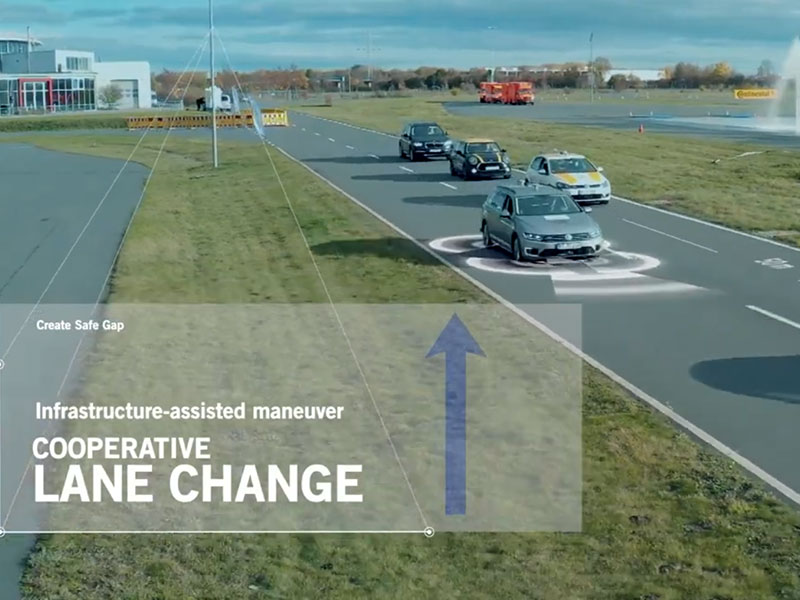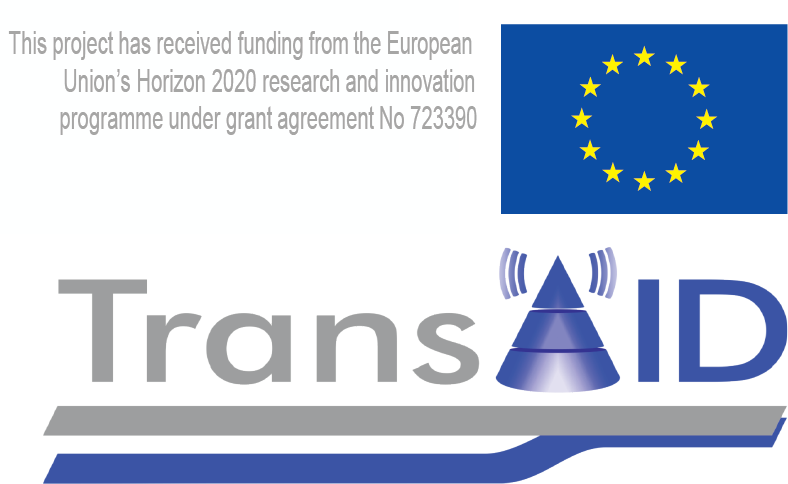TransAID
15104
From 2017 to 2021
TransAID investigated the effects of automated vehicles on road safety and efficiency, with a focus on Transition Areas where automated systems do not function optimally. TML modelled driving behaviour, analysed the impact of management strategies on congestion and emissions, and coordinated the dissemination of project results.
Curious about the findings of this project? The presentations and videos of the final conference are online on the TransAID website.
With TransAID, we investigated the effects of automated vehicles on road safety and efficiency. With the introduction of automated vehicles into traffic, there will be certain zones and situations on the road where automated vehicles can operate fully automatically, and others where they cannot. We mainly analysed these so-called Transition Areas - situations in which the new automated vehicle systems do not work. This can be caused by system limitations, missing road markings, sensor failures, complex intersections, or construction sites. In those Transition Areas, automated vehicles will have to adjust their level of automation and possibly even hand control back to the driver.
With TransAID, we modelled both driver and vehicle behaviour and realistic vehicle-to-vehicle and vehicle-to-infrastructure communications at limited bandwidth. We also formulated advice for vehicles, using measurements of traffic flows and simulated safety measures to assess road safety and predetermined policy objectives. This system was loaded in its entirety into a large integrated simulator, after which the most promising solutions were implemented in the form of real prototypes, which were then demonstrated in realistic urban conditions. On this basis, we formulated guidelines for driving under such conditions. These guidelines also included a guide to the actions and infrastructure interventions needed over the next 15 years for conventional, connected, and automated vehicles to move smoothly together through traffic.
TML focused on the dynamic modelling of driving behaviour in relation to automated vehicles and different levels of autonomy. In addition, we performed an impact analysis of different management strategies regarding congestion levels, emissions, and road safety (external costs). TML also coordinated all dissemination of the project.
Curious about the findings of this project? The presentations and videos of the final conference are online on the TransAID website.
With TransAID, we investigated the effects of automated vehicles on road safety and efficiency. With the introduction of automated vehicles into traffic, there will be certain zones and situations on the road where automated vehicles can operate fully automatically, and others where they cannot. We mainly analysed these so-called Transition Areas - situations in which the new automated vehicle systems do not work. This can be caused by system limitations, missing road markings, sensor failures, complex intersections, or construction sites. In those Transition Areas, automated vehicles will have to adjust their level of automation and possibly even hand control back to the driver.
With TransAID, we modelled both driver and vehicle behaviour and realistic vehicle-to-vehicle and vehicle-to-infrastructure communications at limited bandwidth. We also formulated advice for vehicles, using measurements of traffic flows and simulated safety measures to assess road safety and predetermined policy objectives. This system was loaded in its entirety into a large integrated simulator, after which the most promising solutions were implemented in the form of real prototypes, which were then demonstrated in realistic urban conditions. On this basis, we formulated guidelines for driving under such conditions. These guidelines also included a guide to the actions and infrastructure interventions needed over the next 15 years for conventional, connected, and automated vehicles to move smoothly together through traffic.
TML focused on the dynamic modelling of driving behaviour in relation to automated vehicles and different levels of autonomy. In addition, we performed an impact analysis of different management strategies regarding congestion levels, emissions, and road safety (external costs). TML also coordinated all dissemination of the project.



